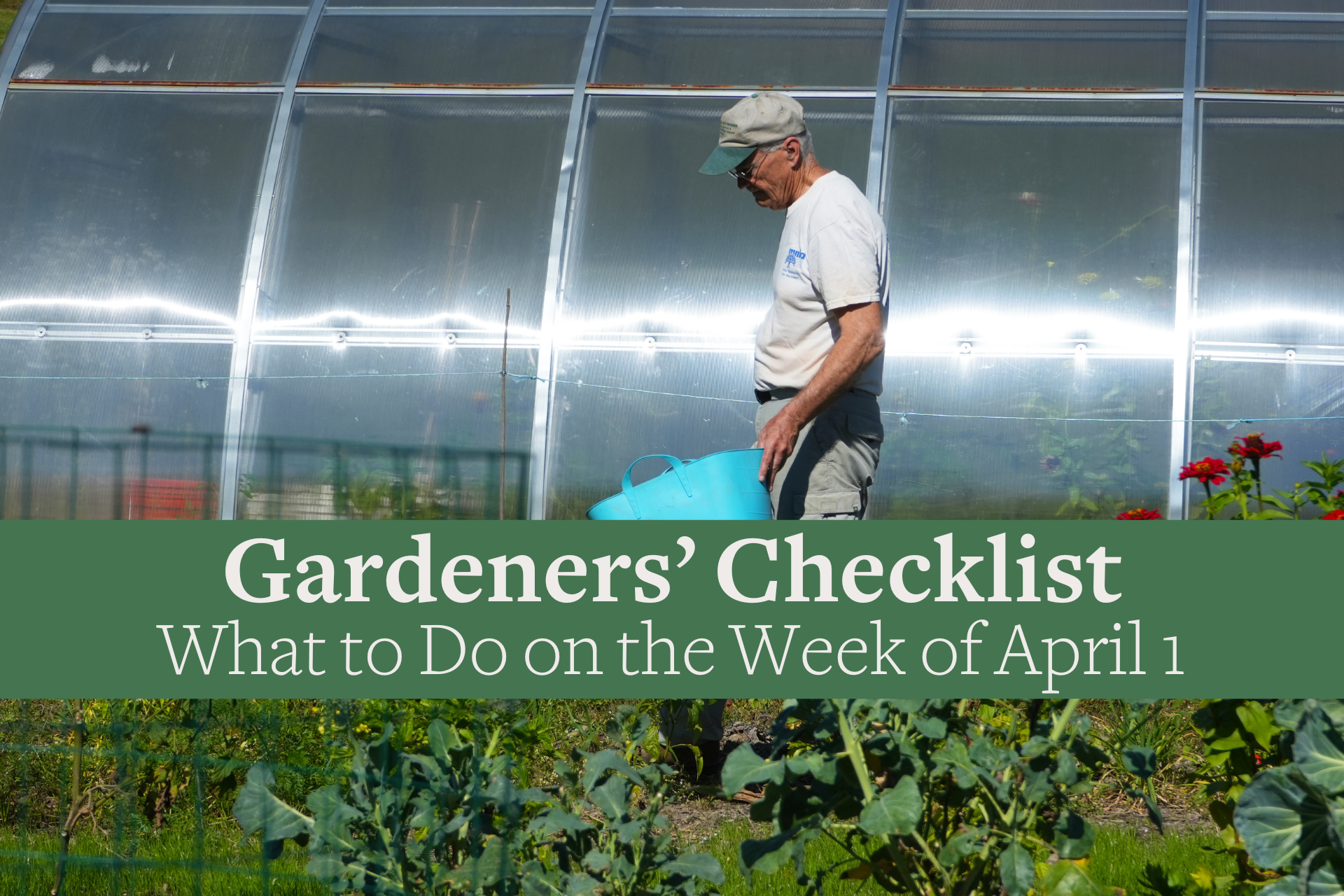You are here
Gardeners Checklist: Here Is What to Do on the Week of April 1
Gardeners Checklist: Here Is What to Do on the Week of April 1
By Ron Kujawski
With the cool down last week, it feels like we are getting back to normal weather for this time of year. We are also getting back to a normal schedule for gardening activities. So, even if you didn’t take advantage of some of the mild conditions and workable soils in March, you didn’t miss much. Now is the “normal” time to:
* Rake lawns. Raking not only removes sticks and stones and broken bones from lawns but also removes some of the dead grass or thatch that has accumulated since last year. Removal of thatch allows for better water and fertilizer movement into the soil. In addition, with less thatch, soils warm quickly to renew the growth of grass. If the thatch layer is more than a half-inch thick, rent a dethatching machine to remove the excess thatch. Dethatching is a little like removing clippings from your head after a haircut. Unfortunately for me, it hasn’t spurred new growth.
* Apply dormant oil (horticultural oil) to trees and shrubs with a history of infestation by spider mites, aphids, and scale insects. Since oil works primarily by suffocating these pests, thorough coverage of the plant is essential. Be sure to read and follow the label directions on the product used.
* Use biodegradable pots for starting seeds of plants that do not respond well to transplanting. Start the seed and grow the seedling in the same pot; then set out the pot with the plant into the garden at the appropriate time. Some plants that do not transplant well are: annual phlox, lupine, morning glory, nasturtium, poppy, toadflax (Linaria), cucumber, squash, pumpkin, chervil, dill, and fennel. Biodegradable pots are made from peat, coir, wood fiber, paper, and even manure.
* Don’t cover seeds of the following plants when sowing indoors. These seeds will germinate more quickly if exposed to some light: dill, lettuce, parsley, savory, ageratum, begonia, bellflower (Campanula), browallia, coleus, columbine, Coreopsis, feverfew, flowering tobacco, Gaillardia, impatiens, petunia, Oriental poppy, salvia, snapdragon, stock, and sweet alyssum.
* Start tomatoes indoors this weekend. Plant a beefsteak variety of tomato for slicing and for juice, a plum type for canning, sauce, and roasting, and a cherry type for salads.
* Sow seeds of root crops, leafy greens, peas, and fava beans if not already done. If some of these were planted a few weeks ago during the mild stretch, make a second sowing.
* Plant a few extra peas for the sole purpose of harvesting the young shoots. When these pea plants are about eight inches tall, snip out the tips and use them fresh in salads, or cooked in soups and stir-fry dishes. Once pinched, the pea plants will produce numerous side shoots for harvest. Of course, this means you won’t be harvesting any mature peas from these plants. Pea tendrils are also edible. Pea shoots and tendrils are best harvested in spring while still tender.
* Prune raspberries and blueberries if this task isn't completed in late winter. Cut all dead raspberry canes (the grayish-looking canes) to ground level and thin out the remaining canes, leaving a space of six to eight inches between canes. Prune mature blueberry bushes by removing thin twiggy shoots and by cutting to ground level older stems that have only thin twiggy growth with few flower buds. Fruit-producing stems and shoots have lots of flower buds. Leafy buds on blueberries are thin and pointy, while flower buds are a bit round and plump.
* Dig up, divide, and re-plant snowdrops (Galanthus nivalis) after the flowers have faded, if desired, or if the clumps have become very crowded. This is the only spring-flowering bulb that I know of that should be divided while the leaves are still green. With other bulbs, wait until the leaves have died down before digging and dividing.
* Remove all dead foliage from bearded iris. Bury or otherwise dispose of the foliage since it may harbor eggs of iris borers.
Ron Kujawski began gardening at an early age on his family's onion farm in upstate New York. Although now retired, he spent most of his career teaching at the UMass Extension Service. He serves on Berkshire Botanical Garden’s Horticulture Advisory Committee. His book, Week-by-Week Vegetable Gardener’s Handbook, is available here.
Help Our Garden Grow!
Your donation helps us to educate and inspire visitors of all ages on the art and science of gardening and the preservation of our environment.
All Donations are 100 percent tax deductible.


